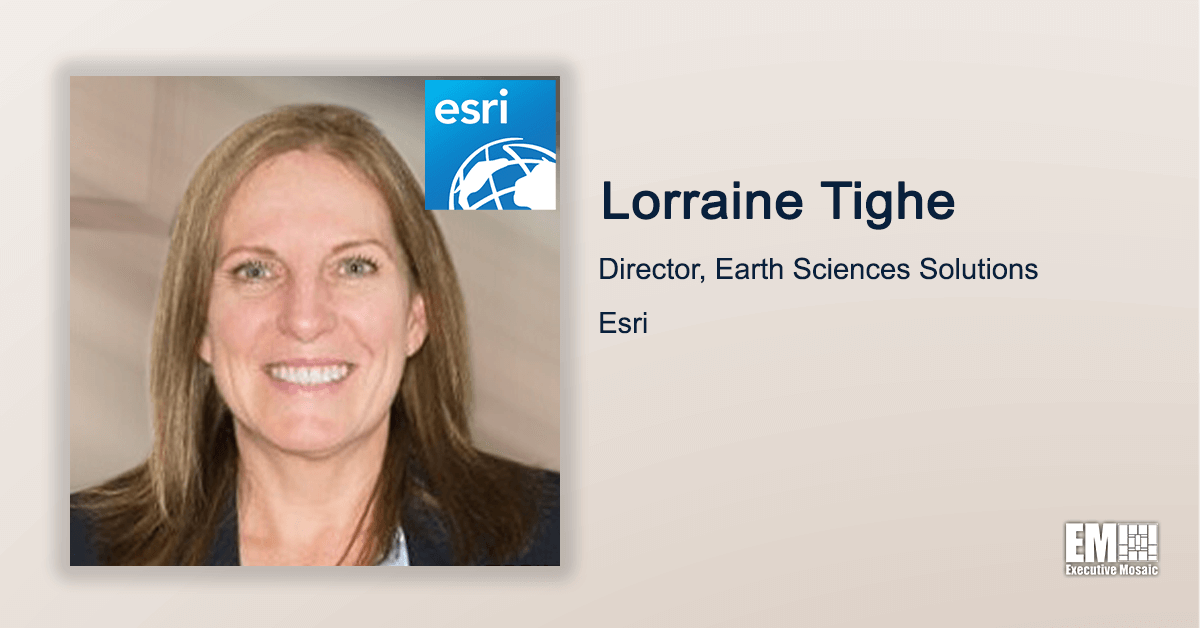In the past few decades, geospatial intelligence has made great strides. With the advent of new modeling technologies and data analysis capabilities, geographic information systems — or GIS — are now being used in a myriad of geospatial applications, including perhaps the most important use: better understanding and combating the growing impacts of climate change.
Many of the GIS advancements made in recent years are evident today at the Environmental Systems Research Institute, known as Esri. The institute’s director of Earth sciences solutions, Dr. Lorraine Tighe, said Esri has been working over the last decade to integrate every type of remotely sensed data that is available into a “living Atlas.”
“So you have analysis ready data at your fingertips, and you’re able to start to perform your analysis and research and discoveries in an instant,” Dr. Tighe described of Esri’s living Atlas efforts during a recent fireside chat session hosted by GovCon Wire Events.
The Contributions of Geospatial Science and Technology to Climate Change Fireside Chat was part of a climate change-focused event series underwritten by SAIC. Join the Potomac Officers Club for the next installment of the series, the Prioritizing Environmental Justice in a Changing Climate Forum, on July 20. Register here.
The instantaneous availability of this data is a welcome and much-needed improvement. Dr. Tighe explained that at the start of her career, working with geospatial data was extremely “labor intensive and time consuming.” Data wrangling — or collecting all the data necessary and preparing it for analysis — previously occupied much of Dr. Tighe’s time.
Now, factors like handheld devices, more advanced GIS software and improved connectivity are making geospatial data more widely accessible and more quickly and easily actionable.
“We can create apps where you can gather information, collect it, populate a map and then you can see people around the globe do that,” Dr. Tighe said.
During her conversation with SAIC’s Chief Climate Scientist Steve Ambrose, Dr. Tighe recalled her experience participating in a citizen science project in Southeast Asia called Eco Warriors. Through the effort, Dr. Tighe used GIS and remotely sensed data to create an elevation map that helped a community conduct a suitability analysis for an oil palm plantation.
Although the modern tools of today were not yet available during the time of that project, Dr. Tighe remembers the impact GIS had on the community.
“At this time, we didn’t have handhelds to really see visually where the suitability was, but we did have GIS that could create a suitability map,” Dr. Tighe reflected. “We printed this paper then, and we could empower the community with this paper map to say, ‘Okay, this is a suitable place, this isn’t,’ and it brought the whole community together.”
Today, community advancement remains at the heart of Dr. Tighe’s work at Esri, but now, her efforts are accelerated and supported by a host of advanced modeling tools — like digital twins — and artificial intelligence solutions.
“It’s just incredible the amount of data you can analyze in a matter of minutes,” commented Dr. Tighe. With digital twin technology, Dr. Tighe explained that working with multi-dimensional and multi-temporal data has become quicker and more useful than ever.
“And if we think about climate change, it needs to take all of that remotely sensed data, which used to be so vast, but we’re now able to crunch it and model it in the matter of minutes,” Dr. Tighe shared. “It’s just such an exciting time for anybody to start to work with remotely sensed and GIS data.”

Join Steve Ambrose and the Potomac Officers Club on July 20 for the Prioritizing Environmental Justice in a Changing Climate Forum. Climate experts from government, industry and media will gather to discuss some of the most pressing issues facing environmental justice today. Register here.
















